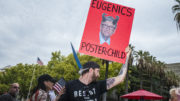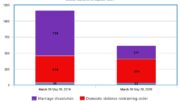What if Folsom announced an emergency City Council meeting one hour before it started, chose not to livestream it despite having the capability to do so and then issued recommendations to practice “appropriate” social distancing?
This happened Monday—and it shows how some local governments are stumbling through a global health pandemic for which they have no comparison.
In contrast, the Sacramento City Council convened a similar meeting three days earlier—and livestreamed it in lieu of allowing members of the public to attend.
But the slow-paced suburb to the east is no streetwise metropolis. Its part-time council is made up of a health insurance agent, the head of an athletic association, a security rep, an engineering consultant and an architect. At least one member is over the age of 65, a subgroup California Gov. Gavin Newsom pleaded with just a day earlier to remain at home to cut down on the risk of infection.
That five-person body proclaimed a local state of emergency at the March 16 meeting, freeing the upper-class city of 76,000 to secure additional resources and mutual aid assistance from other jurisdictions. The city also announced the closure of its public library, zoo, aquatic center and five other community facilities starting Tuesday.
“The proclamation should not be considered a reason for increased concern, rather an important step in our city’s mission to reduce the risk of exposure,” Folsom Mayor Sarah Aquino said in a statement following the meeting. “I urge community members to stay informed, follow the directives of public health officials, stay home if you are sick, and continue practicing appropriate social distancing.”
The council still planned to meet regularly until further notice—although while adhering to social distancing guidelines—but Folsom suspended committee and commission meetings through April. “City Council meetings are live-streamed on the city’s website,” a release stated. Well, not all of them.




